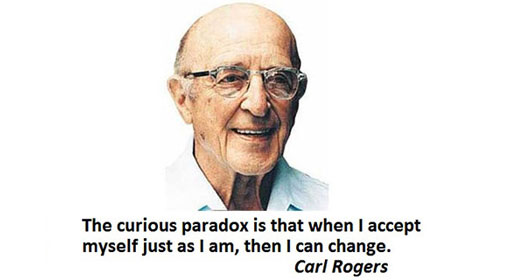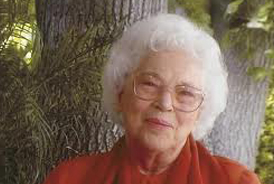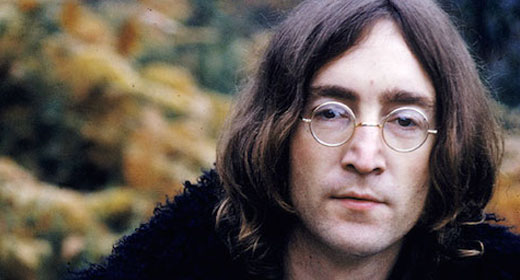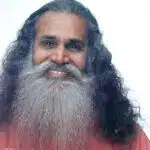by Will Welch: In 1967 the noted Harvard psychedelic explorer Dr. Richard Alpert was transformed into Ram Dass by a Hindu guru in the foothills of the Himalayas…
He then came back to the States with a vision of spirituality that transformed hippie America. Now the message of this 87-year-old teacher who keeps images of both Barack Obama and Donald Trump on his altar has taken on a profound new resonance.
Last year, my wife and I were driving south on Interstate 91, somewhere between Vermont and New York City, listening to episode five of the Ram Dass podcast, Here and Now. It wasn’t my first listen; I had become addicted to playing and replaying the first seven episodes, all of which come from a 1968 lecture Ram Dass gave at the Bucks County Seminar House in Erwinna, Pennsylvania.
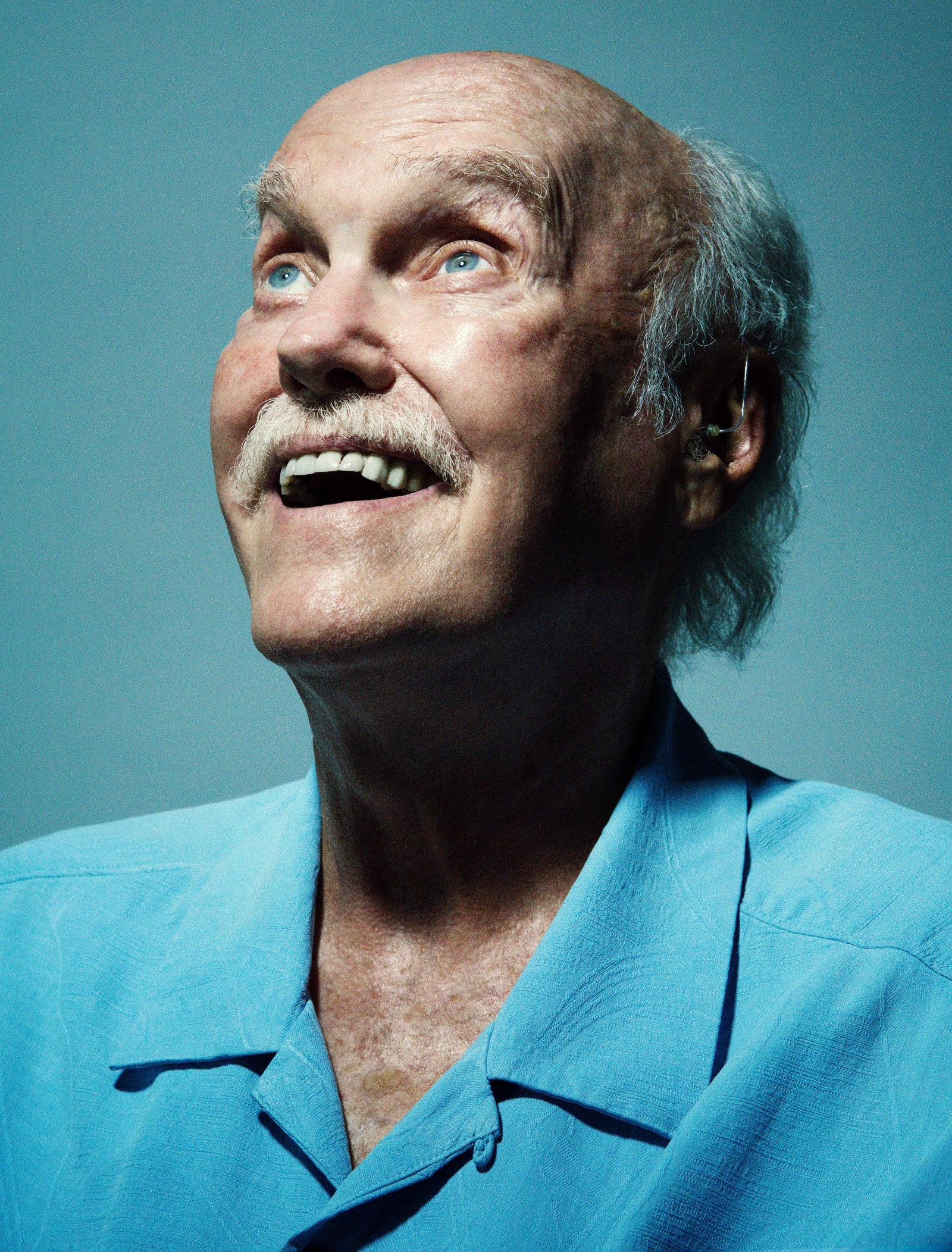
We initially encountered Ram Dass’s work back in 2011. My wife, while going through a difficult time, was given a paperback copy of the 1976 book Grist for the Mill by her kindhearted, kirtan-playing landlord in Northampton, Massachusetts. That summer, at the beach, we read each other passages as we lay in the sun; soon, also at the beach, a new friend gave her his copy of Be Here Now—Ram Dass’s 1971 book of hypnotically illustrated spiritual exhortations. That title was a fixture on every bona fide hippie bookshelf in the ’70s and has sold over 2 million copies. But it wasn’t until last year, when I was trying to find a more soul-fulfilling way to burn up the time on my daily commute, that I discovered the podcast and fully immersed myself in Ram Dass’s message.
As my wife and I hurtled down the highway listening to the podcast, one of Ram Dass’s digressions gonged me so good it would have been safer if I had pulled over the car. Trumpism had just dawned in America. The air was rife with fear, anger, and bluster: The Women’s March had taken place in January and then Charlottesville in August. “I think there’s blame on both sides,” Donald Trump had said. All of it was still raw. I remember being particularly anxious about the way the political moment was playing out on social media. My feeds were full of strident partisan rhetoric and hard lines drawn in the sand. If you’re not angry, you’re not paying attention. That’s when Ram Dass articulated an idea that held as much truth and force in 2017 as it did when he said it 49 years earlier. “I know many of you will feel uncomfortable when I say this, but the hippies create the police as much as the police create the hippies,” he said, his Kennedy-esque Boston accent still intact. “That the liberals create the conservatives. The protesters create the John Birchers just as much as the John Birchers create the protesters. That as long as you are attached to whatever pole you are representing, the vibrations which you are sending out are creating its polar opposite around you. If you can do whatever is your karma—which may be walking in a protest march or fighting in Vietnam, or being a conservative or a liberal or being a housewife or being a yogi—and can do it without attachment, and do it fully and thoroughly but without attachment, then you do not create that karma. You do not create the polar opposite.”
I had listened to this episode before, but I had not really heard it until that moment. I rewound the passage repeatedly until my wife asked if we could please let the episode play on.
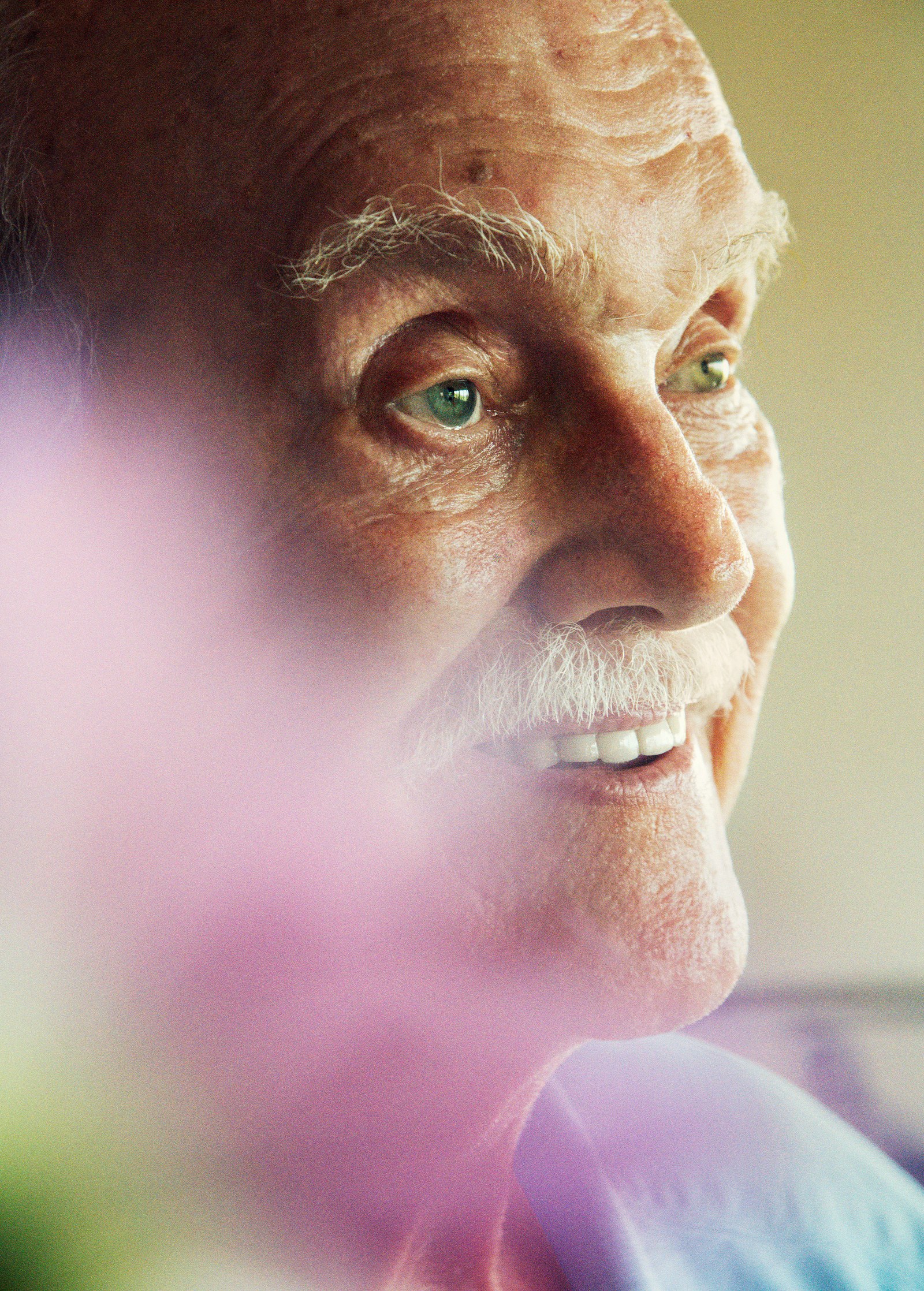
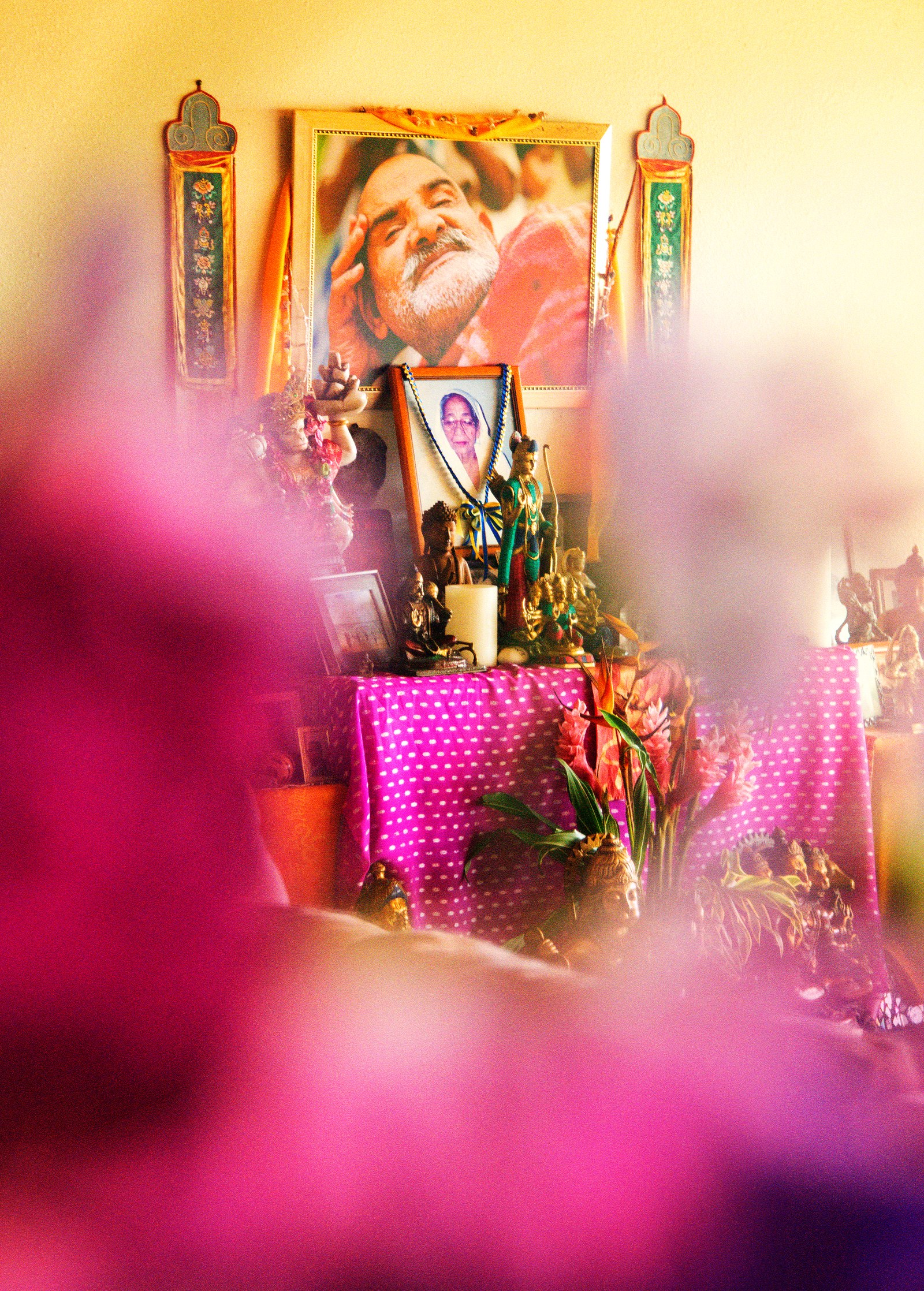
As the parallels between today’s fraught political environment and that of the Vietnam era multiply, Ram Dass’s words and story are resonating again. In times like these, the sword of Ram Dass’s message of service and love—and his blueprint for how to use daily life as “grist for the mill of awakening”—feels sharp and battle-tested.
In 2018, Ram Dass is not exactly famous—not like he was in the 1970s—but his fan base is large and ardent. It consists of aging baby boomers, mostly. But there are younger audiences catching on, too. The painter Wes Lang joined me on the trip to meet Ram Dass in Maui. Alix Ross and Elijah Funk, founders of the Zeitgeist-y clothing brand Online Ceramics (one shirt reads, Your Ego Is Not Your Amigo), are only in their mid-20s yet are deeply immersed in Ram Dass’s oeuvre. As I work on this piece, I hear about others: The comedian and podcaster Duncan Trussell. Marc Benioff, the chairman of Salesforce. I recently saw a young woman reading The Alienist on the New York City subway with a tattoo, in Courier typewriter font, that read: Be present. Be patient. Be here now.
Mindfulness as a business tool has exploded in recent years, as young entrepreneurs mimic their own guru, Steve Jobs, who is said to have credited Be Here Now with getting him to try LSD. (Jobs was also a major contributor to Ram Dass’s Seva Foundation, which strives to alleviate blindness across the world.) And Ram Dass’s psychedelic work—from back when he was still a Harvard psychologist—is being actively reconsidered: Michael Pollan’s No. 1 best-selling book from this May, How to Change Your Mind, charts how science is currently re-examining the therapeutic powers of LSD and psilocybin, and Pollan writes about experimenting with the drugs himself to open his own doors of consciousness.
Yoga, organic foods, the Grateful Dead, and Baba Ram Dass, too—all of them are back in fashion, and Ram Dass’s Love Serve Remember Foundation has been right there to meet them, through modern tools like the Here and Now podcast (135 episodes and counting) and the @babaramdass Instagram account (nearly 200K followers). Back in June, when 320 tickets to a five-day Ram Dass retreat in Maui set for November went on sale, they sold out in six minutes.
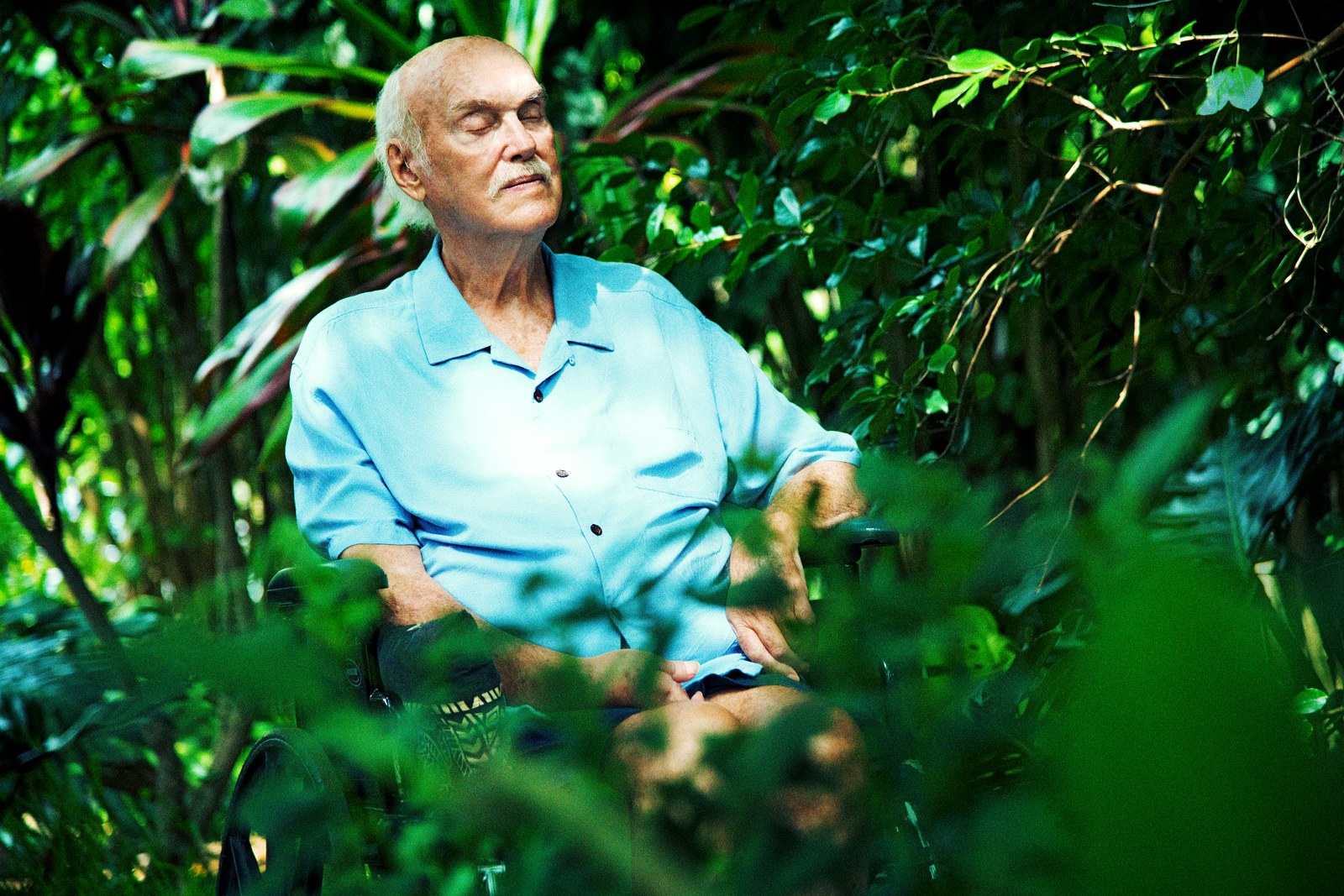
For safety reasons, I have agreed not to say too much about the location of Ram Dass’s home in Maui, but I think it’s okay to note that the cars parked out front all have license-plate frames that say I’D RATHER BE HERE NOW.
The first thing visitors see upon entering the house is a watercolor portrait of Ram Dass painted by Joan Baez, but otherwise the visage that’s everywhere inside, in literally countless renderings, is that of Neem Karoli Baba, the Hindu saint Ram Dass calls Maharajji, or “my guru.” There are statues, photographs, tiny cardboard cutouts, and a wall-sized mural. Even a throw blanket that hangs over the side of the large pinkish faux-suede couch bears the guru’s likeness, with his elephantine shoulders and crooked smile.
“I didn’t like Hinduism,” Ram Dass will tell me of the days before he found his guru. “All the gods and goddesses and bells and whistles—agh. I was a clean Buddhist.” Clearly, after devoting himself to Maharajji in the late 1960s, his tastes changed. The living room altar also holds figures of the Hindu monkey god Hanuman (servant to Ram and the deity closely associated with Maharajji and his devotees) and the Buddha, plus images of Christ, Gandhi, Mary, and other saints—as well as those of both Barack Obama and Donald Trump. The message is simple: Love everyone. “I have to work hard to be able to keep my heart open to people whose policies I disagree with,” Ram Dass once said, in a lecture from the ’90s. “I have a holy table with pictures on it of Buddha and Christ and Maharajji, my guru.… And I used to have Caspar Weinberger”—the secretary of defense under Ronald Reagan—“on the table, but I now have replaced him with Bob Dole. So in the morning, I say, ‘Good morning, Christ! Hello, Buddha! Good morning, Maharajji! Hello, Bob.’ And I see how far I have to go yet. Because after all, [Bob Dole] is merely God in drag, saying, I bet you won’t recognize me this way, will you? They’re all faces of the beloved.”
When I enter the kitchen, where he sits in his wheelchair, Ram Dass, who is 87, offers me a squeeze of his good left hand and says softly that he would like to do our interview upstairs, in his study, which he gets to by mechanical lift. Ram Dass had a stroke on February 19, 1997, and it left him paralyzed on his right side. It also caused expressive aphasia, which inhibits the exquisitely gifted lecturer’s ability to find his words. His care and his household are administered by a friendly, tough, joyful woman I know as Dassi Ma, although her e-mail signature just says Kathleen Murphy. There are others—I don’t know exactly what to call them (friends? followers? devotees? employees?)—around the house helping to look after things, as well as six cats.
Up in the study, a strong, suntanned young man named Govinda helps Ram Dass from his wheelchair into a threadbare and faded La-Z-Boy that faces out the window. Just a few hundred yards past the Jurassic Park-size tropical plants and giant red flowers is the coastline. Above it, the horizon line of the ocean hovers. The room is filled with the squawks and chirps of birds, and Ram Dass is surrounded here, too, by prayer flags and many images of the smiling guru. There are stacks of books everywhere, printed-out articles (“ ‘We Need Global, Secular Ethics’ by Tenzin Gyatso, the 14th Dalai Lama”), and an iPad attached to a stand. Truthfully, I am nervous to have an audience with this octogenarian pioneer of human consciousness—what do you ask a man who has simply acted as the mirror for your own self-discovery? So I start with the most basic of questions about his daily routine. After a long period of heavy breathing, and through epic pauses as he searches for his words, Ram Dass speaks, describing getting up at 8 a.m. for his medical routine; choosing between soup, oatmeal, and eggs for breakfast; and beginning his interviews with various students, friends, and followers either in person or on Skype. “And then,” he says, looking far away, his sky-blue eyes shining in the midday Maui light, “I just look out at this view.”
Ram Dass smiles, and his already slow-dripping speech becomes even slower and dreamier. “I look at clouds,” he says. “And ocean… And trees… And birds… And the wind. And I think… Yeah.” The coastal breeze blows through the room, enough that I can see it wiggling the ends of the hairs on my arm and the gray strands hanging from Ram Dass’s balding dome. “You see, I treasure the moment.” Ram Dass begins whirling his left arm in circles in front of him. After a beat, I can feel that he is summoning the moment, the corners of his mouth turned up, his arm still swirling the whirlpool around. It feels as though the past and future are getting sucked in, leaving nothing but the here and now. His presence—his here-and-now-ness—is so strong and so grounded that he is able to open it up and share it with you. It is unlike anything I’ve experienced before. My rib cage seems to crack open. My heart soars. “This moment now,” he says.
I laugh blissfully. You can hear it on the tape. He laughs, too, like: Oh, man. Yeah.
“The moment,” he says with a breathy exhale, holding on to it for both of us. “The moment.
“You don’t think about…the past. You don’t think about…the future. You just stay with the moment. And the moment is not in time.”
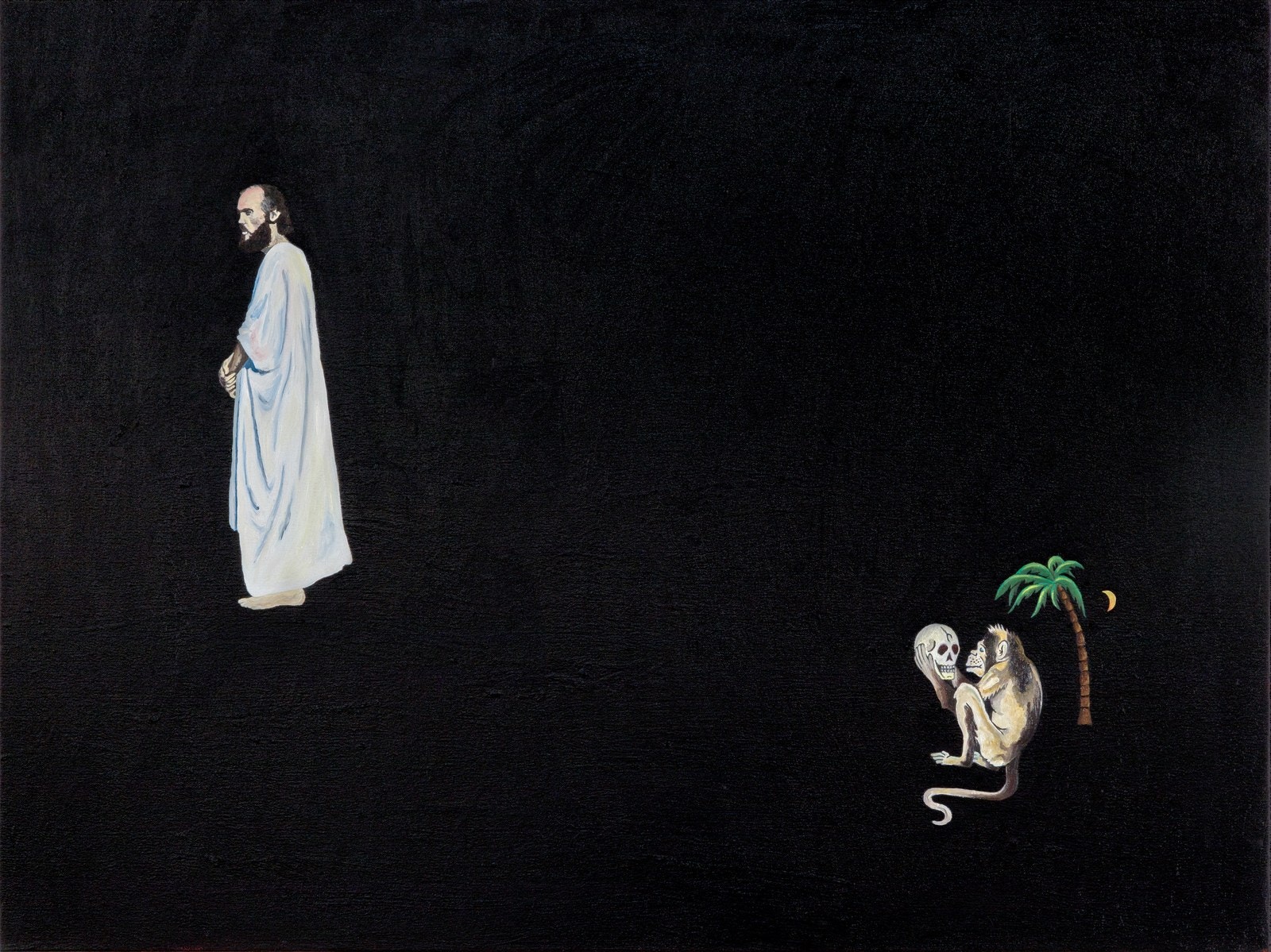
Ram Dass is perpetually telling and retelling his origin story, and it always begins around 1960, with his former life as a 29-year-old clinical psychologist on the faculty at Harvard named Dr. Richard Alpert. He’d been the pride of an esteemed Jewish family in Boston, with an impressive résumé (gigs at Stanford and Berkeley, a corner office and sterling reputation at Harvard) and all the trappings of success that came with his swinging young professorship, including a blue Mercedes-Benz, a Triumph motorcycle, a sailboat, a single-engine Cessna airplane, a live-in girlfriend in an apartment on one side of town and a live-in boyfriend on the other. Alpert was an academic force, but somewhere along the way he started to register a disturbance. “There was some point as a professor at Stanford and Harvard,” he writes in Be Here Now, “when I experienced being caught in some kind of a meaningless game in which the students were exquisite at playing the role of students and the faculty were exquisite at playing the role of faculty…but nothing was happening. I felt as if I were in a soundproof room. In the face of this feeling of malaise, I ate more, collected more possessions, collected more appointments and positions and status, more sexual and alcoholic orgies, and more wildness in my life.”
The turning point finally came in March of 1961, when Alpert ingested a ten-milligram pill of synthetic psilocybin—the psychoactive ingredient in magic mushrooms—at the kitchen table of his Harvard colleague Timothy Leary. Feeling, as Leary did, that they had uncovered a scientifically revolutionary wrinkle in human consciousness, Alpert threw himself headlong into Leary’s Psilocybin Project at the university. Under the auspices of Harvard, Leary and Alpert began giving out, fairly willy-nilly, psilocybin and a questionnaire to pretty much whoever was interested—“jazz musicians and physicists and philosophers and ministers and junkies and graduate students and social scientists”—as well as taking all manner of chemicals themselves. “At one point,” Alpert writes, “I took five people and we locked ourselves in a building for three weeks and we took 400 micrograms of LSD every four hours. That is 2400 micrograms of LSD a day.… We finally were just drinking out of the bottle.… We were very high. What happened in those three weeks in that house, no one would ever believe, including us. And at the end of the three weeks, we walked out of the house and within a few days, we came down! It was a very frustrating experience, as if you came into the kingdom of heaven and you saw how it all was…and then you got cast out again.” It wasn’t long until Harvard had had enough. Alpert was fired from the faculty for administering psychedelics to an undergraduate, and Leary got the boot, too.
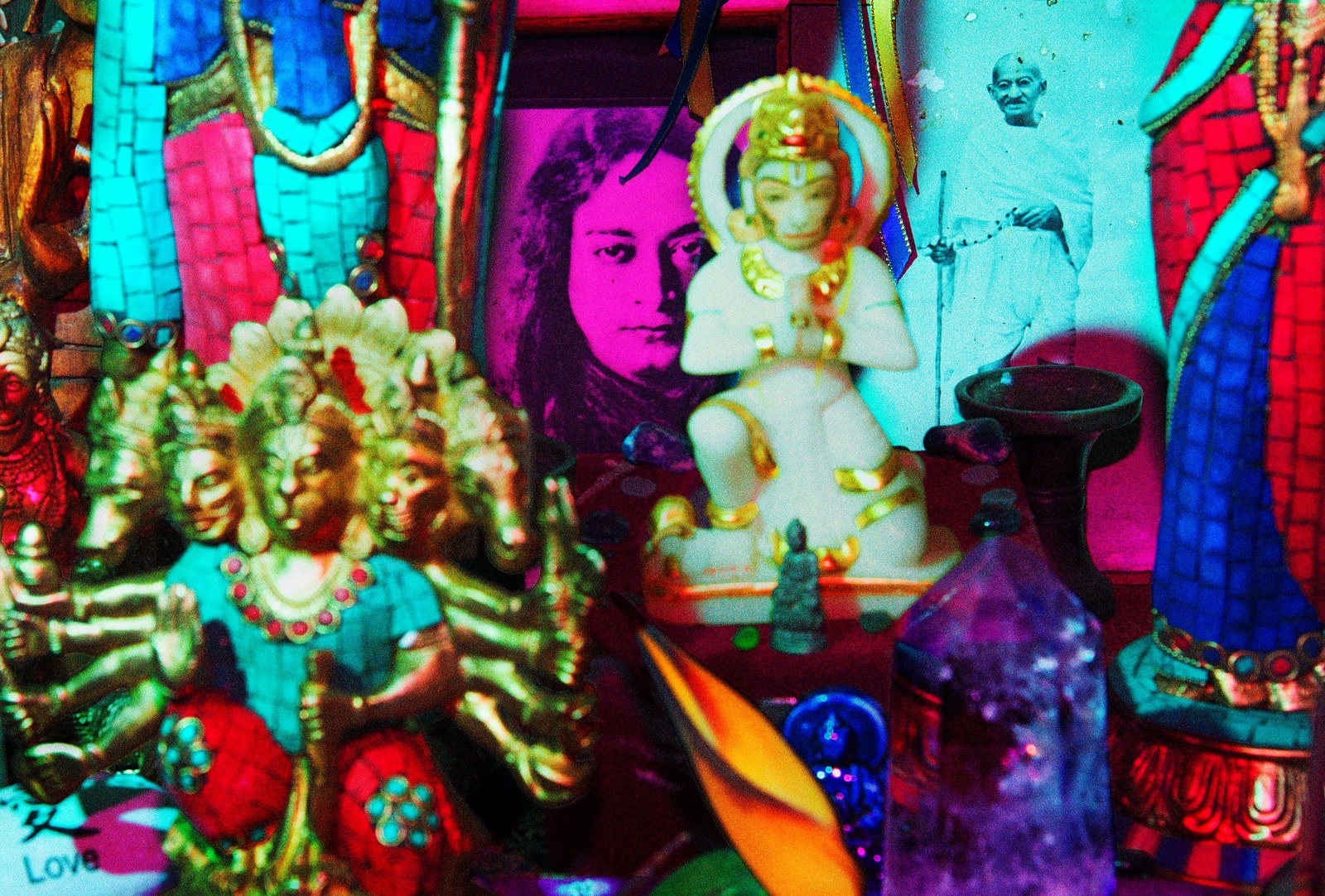
Undeterred, Alpert, Leary, and an orgiastic crew of friends and followers went first to Mexico and then to the Bahamas, then moved into a mansion in Millbrook, New York, where they continued their extreme explorations in experimental psychedelic living.
Groovy as that all sounds, the Alpert biography really starts to get far-out in 1967 when, frustrated by psilocybin, LSD, and Leary himself, Alpert went on an odyssey eastward in pursuit of the great big high from which he would never have to come down again. Months into his spiritual quest, after sharing LSD and other chemical wonders from his pharmacological travel kit with monks and holy men from Afghanistan to Nepal in search of an explanation for the drug and perhaps a truer, permanent pathway to consciousness, an exasperated Alpert finally landed at the feet of a Hindu sadhu, or wandering saint, in the foothills of the Indian Himalayas. This was Maharajji, who lives on the razor’s edge between form and formlessness, an enlightened being, Alpert said, whose existence consists of constant oscillation between his earthly body and the great beyond. Maharajji takes Alpert into his ashram and renames him Ram Dass. The name translates, simply, to “servant of God.” Alpert would spend the next six months in silence—cold bath every morning at 4 a.m., vegetarian diet, extreme meditation and breath work, and an education in bhakti yoga. He was taught by one of Maharajji’s disciples using a piece of chalk and a slate to communicate.
The lessons that Alpert learned in India as he transformed into Ram Dass are what he would bring back to the young, stoned seekers of the American counterculture. In the April 22, 1976, issue of Rolling Stone—Peter Frampton on the cover, with a nice “Ram Dass Rides the Holy Man Circuit” cover line—writer Richard M. Levine finds Ram Dass, no longer in holy-man robes but in cutoff jean shorts and a Grateful Dead tee, riding from lecture to lecture with his friend and fellow Maharajji devotee Krishna Das. Life on the circuit is as rife with groupies, chemicals, egos, and rock ‘n’ roll as the world someone like Frampton might occupy, but on this circuit there are more hucksters and religious zealots playing on the fears and fantasies of a whole culture of people who weren’t nearly as ambitious as Richard Alpert about what to do once the acid wears off and they’ve merged back into their personalities. In the profile’s penultimate scene, which reads like a screenplay for a comedy about the era, Ram Dass stops in San Francisco to meet with an ad hoc group calling itself PILL, or People Investigating Leary Lying. It seems that Timothy Leary, incarcerated for smuggling marijuana across the border from Mexico, has begun talking to the FBI in hopes of earning early parole. The group meets at a town house to plan a press conference, and the gathering includes Timothy Leary’s son Jack and Allen Ginsberg. When Ginsberg questions the tone of the proposed press conference, Ram Dass chimes in, saying, “I agree with Allen. Maybe we should wait until we know what Timothy’s saying. Some of you seem too one-pointed about this whole thing.”
he betrayal stings the young founders of PILL. “Isn’t there anything that gets you angry?” an organizer asks. “Napalm? Kissinger? Watergate?”
“Frankly, no,” Ram Dass answers. “I just feel compassionate for the horrible beauty of the incarnation.”
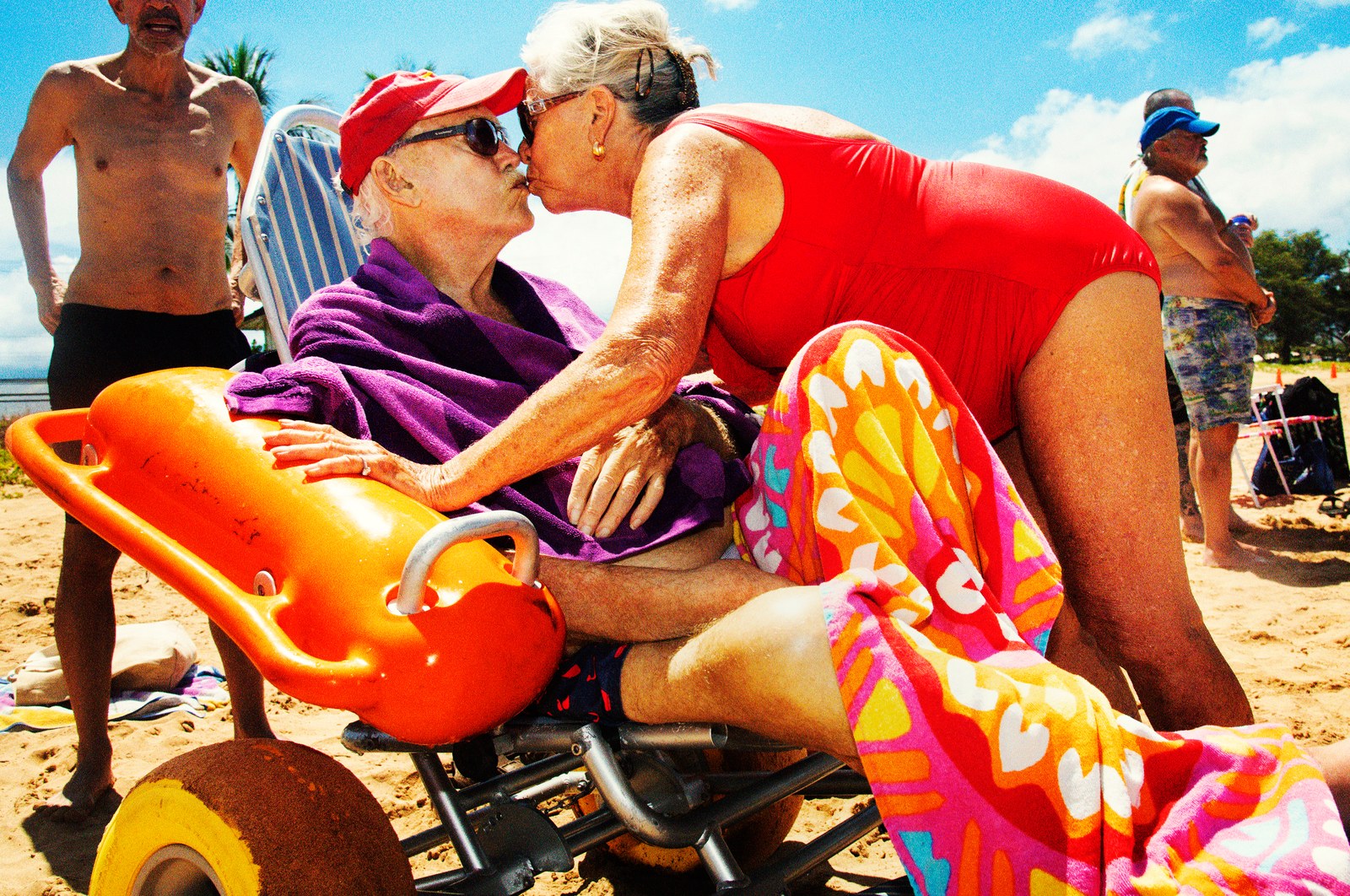
Perhaps the greatest trick Ram Dass ever pulled, and what has continued to separate him from a zillion self-styled alternative religious leaders and cultists over the decades, is that he has never allowed himself to become attached to any one given “-ism.” He was born a Jew and transformed by a Hindu guru, but his lectures and books invoke Zen Buddhism, Sufi mysticism, Christ consciousness, one-pointed meditation, and bhakti (devotional) and karma (living) yoga. There is no name for the philosophy he has spent his life espousing, much less a church or temple, and he’s not selling a whole lot besides books, lectures, and the occasional license-plate frame. In the 2001 documentary Ram Dass, Fierce Grace, which focuses on his struggle with the daily physical realities of life after his stroke, a philosopher named Huston Smith says, “One of the virtues of [Be Here Now] is that it is not tied to any historical religious tradition. It just goes straight for the pay dirt and the essence and the heart that underlies them all.”
As I sit with Ram Dass, he subtly and rhythmically taps the index, middle, and ring fingers of his good left hand against his thumb—he is counting his mantras on the beads of an invisible mala even as, here in the room with me, he hunts for the words that he needs for our conversation.
I ask Ram Dass about the nature of a guru. I tell him that I have been listening to his lectures every day for the better part of two years and wonder if that makes him my guru. “Every day?” he asks, surprised. My question is not a new one. Ever since Ram Dass returned from his first trip to India, in ’67, his followers have been treating him like a guru, or even something more. “I’ve been fashioning a metaphor,” Ram Dass says by way of response. “Maharajji’s a fisherman. You’re the fish. And me? I’m the worm.” At this, Ram Dass smiles and points to a very old photo on the altar behind me of two young boys holding a sign that reads FISH WORMS in scrawled marker—basically a lemonade stand for bait. “You see that picture?” he asks. “That was me and my brother. We were in the worm business.”
If one were to try to reduce the densely layered message that this unlikely American worm brought back from the Himalayas, one path would be to focus on Ram Dass’s translation of the Hindu tradition of karma yoga for the Western mind and life here in the States. “Once you get that first glimpse of living Spirit,” Ram Dass writes in his 2013 book, Polishing the Mirror, “once your heart opens even for a moment to unconditional love, everything in your life becomes grist for the mill of your awakening.… If you’re a lawyer, you go on being a lawyer, but you begin to use being a lawyer as a way of coming to God.” The way to work with this concept, Ram Dass teaches, is to simply understand all your thoughts, words, and actions as an offering to God. The mood you choose when you wake up in the morning? Offering to God. The way you react to the grating personality of your most annoying co-worker? Offering to God. The choices you make when friends begin gossiping, or a beautiful stranger passes you on the street, or your child throws the day’s fifth tantrum? Whatever you think, say, or do is all an offering to God—for better or worse.
To start neutralizing your impulses and get to a place where your behaviors begin to feel worthy of becoming offerings—to begin the process of awakening and going to God, Ram Dass says—you have to start cultivating a witness consciousness, a perspective or voice inside of you that isn’t always so busy doing life. Instead, it just is. As your ego goes through life’s ups and downs, caught up in the melodrama of it all, this new consciousness observes with detachment from a peaceful state of presence and neutrality. Just watching it all float by.
“Each day,” Ram Dass tells me in his study, “from 7 to 8 a.m., I meditate—I leave my thoughts. [Usually] you’re thinking, thinking, thinking. And you’re identified with each thought.” By this, Ram Dass is referring to the way our brains process and organize information according to who we think we are—everything gets run through our carefully constructed personality filter, a.k.a. our ego. “And then you say,” Ram Dass continues, “What am I doing?” This is the moment when what Ram Dass calls the witness consciousness kicks in. “Using mantra, I start a journey from here”—Ram Dass points to his head—“to here.” Ram Dass points to his heart. “The spiritual heart holds the doorway to soul land,” he says. “So I accomplish the move from head to heart, in part with mantra: I am loving awareness. I am loving awareness. I am loving awareness.” With each repetition of the mantra, Ram Dass slowly begins charting the daily process of moving his consciousness out of his thinking mind and toward his open, present, compassionate heart—from ego land to soul land.
“All the universe is love,” he continues. “And I’m loving all of the universe.… Everything—everything—has love in it.”
By now, Ram Dass is really savoring what he’s saying, and the fullness of it really knocks him out. He goes quiet, blasted out by loving awareness, suspended once again in the moment.
“Wow,” he says. “Yum, yum, yum, yum.” He opens his eyes as if from a trance, looks at me, and laughs with joy.

It is an open secret that, while Ram Dass has had many sexual encounters with both men and women, his strongest sexual attractions have been to men. Yet in all the books and lectures—and for all his self-deprecating honesty and frank discussions of his sexual neuroses through the years—it’s not something he often discusses directly. In fact, when lecturing easily and plainly about topics like Tantric sex, he has generally chosen heteronormative pronouns—a “he” partner in relationship to a “she” partner. Which is why I was surprised to find, when I first cracked open his new book, Walking Each Other Home, that his co-author, Mirabai Bush, refers to him as “gay” in the introduction. It’s not a term I’d heard explicitly applied to him before.
Yet now, from the chair in his Maui study, as he eats from a small bowl of nuts and dried mango, Ram Dass seems eager to talk about his sexuality. It first comes up when he points out the picture of him and his brother manning their FISH WORMS stand. “I was cute,” Ram Dass says. “That was my claim to fame. In junior high school, I was funneled into a school with Irishmen and Jews. I was a fat Jew, and the Irish kids would beat me up. I would have milkshakes with my teachers, and the bus driver let me be the doorman, so I had friends, but not peers.” Here, Ram Dass pauses for more than a minute, staring off at the ocean. I assume that he’s lost the thread, or simply let go of what was merely nostalgic reverie, but then he continues with a head of steam. “I was at a prep school, and I had leanings towards homosexuality. And that got into my mind. From Stanford to Harvard, I was attracted to boys. And I wonder if Maharajji arranged that. I got dismissed from Harvard because I had given psychedelics to an undergraduate. We had agreed with the dean that we would not give psychedelics to undergraduates.” Ram Dass flashes a mischievous grin. “He was an attractive kid.” So do you suspect, I ask, that Maharajji had a hand in making you attracted to men because it would ultimately lead you to him? “I suspect,” he replies with a nod. “He’s a rascal.” “Maharajji?” I ask. “Yeah,” Ram Dass says.
Now, it’s possible that Ram Dass simply raised this topic because these are new realizations—because time and the waning of his sexual energy with age have given him a more honest perspective on his own sexuality. But I think it’s something different: I think Ram Dass finally feels the culture—the one that he streams into this study in Maui through his iPad—is finally ready to receive his nuanced truth.
It’s a beautiful thought: That just as Ram Dass, nearing his ninth decade, has wisdom to offer a younger generation of people who are seeking a new way in a confusing time, and are once again being awakened spiritually by his message, so it seems that this new generation has something equally new and important to offer Ram Dass.
Once a week, Ram Dass and about 20 of his people go swimming at a beach in Maui. He arrives in his electric car, driven by Dassi Ma. With help, he’s transported into his wheelchair. At the lip of the beach, he is moved into an aluminum dune buggy, with oversize yellow wheels and big orange plastic water wings. As he is helped into a life jacket, his people gather around him and visit with one another, occasionally sidling up to Ram Dass, who exchanges greetings with them but mostly looks out at the ocean in smiling silence, perhaps a little overstimulated by the whole scene.

Once the group is fully gathered, Ram Dass bombs down into the surf and slides off the buggy. Finally, the aging teacher with the laser-sharp mind that is at distinct odds with his crippled form is free from his body and floating. His people throw hibiscus blooms while they tread water or float on water noodles.
Eventually, a chant breaks out. Each of us has a one-to-one connection to the ONE! In fact, we are the ONE! goes one portion. And in another, If it’s not fun, don’t do it! And if you must do it, make it fun!
The water ritual culminates with one final ecstatic chant. In the past, Ram Dass, who is known to exclaim Oh boy, oh boy, oh boy! when something spiritually exhilarating unfolds, would put his hand on a buoy and lead the crew in a joyously hollered pun: Oh buoy, oh buoy, oh buoy! Then one day, however, the buoy went missing, so now a young man from the group serves in its place, effectively doubling the pun. Today the buoy boy is a handsome young man named Derek. I later ask him what he feels when Ram Dass puts a paddle-gloved hand on his head and leads the chant. “The first time I was the buoy, I got out of the water and all I could see was love,” he tells me. “It blew my mind. I looked in this woman’s eyes and saw her like a child. She was a 70-year-old woman.”
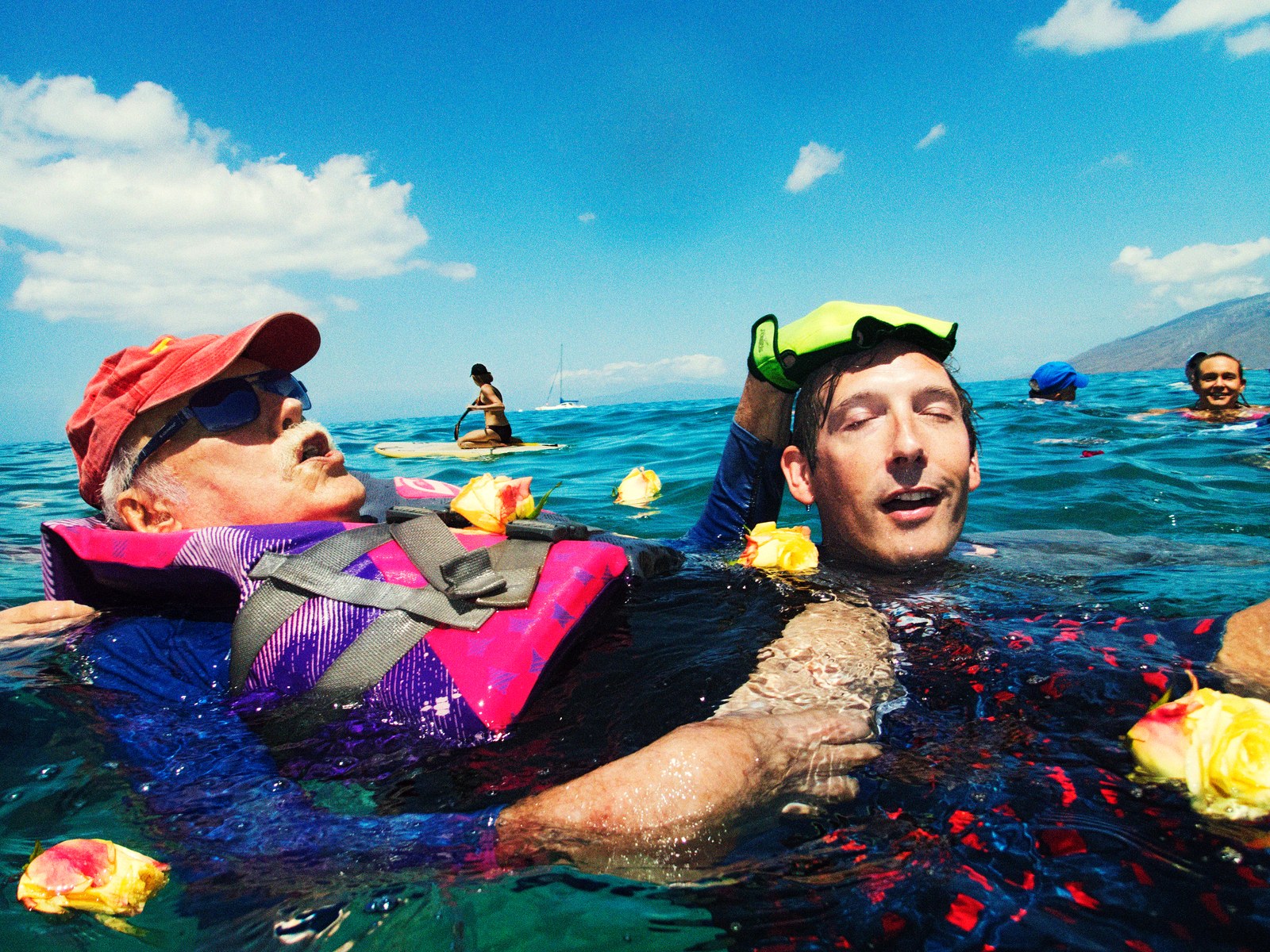
As we swim around Ram Dass, smiling helplessly at one another under the clear blue Hawaiian sky, word of what I’m doing there spreads, and one of the guys jokes that we’ll have to rename the magazine Guru Quality this issue. A glamorous older woman named Lili, who introduces herself to me as the Minister of Fun and gives me a small electric-pink Ministry of Fun card with the water chants printed on it, says, with a big, flirty smile, “Oh, please don’t give any details of where we swim, or he’ll never get any peace! You know—people just can’t stay away from him!” She is being protective, but it’s laced with both empathy for all those Ram Dass followers who are not in the inner circle and gratitude for the fact that she holds such a special place.
Before we all get out of the water, I paddle over to Ram Dass, who is floating on his back. “Ram Dass,” I say, “what’s the word you would use to describe what it’s like to be swimming here today?” His eyes are hidden behind his glasses and a faded red baseball cap from his own merch store that has sub ek (“all one”) embroidered on it in Sanskrit, but I can tell he is looking for his words. “Enveloped,” he says after a pause, “with love.”



